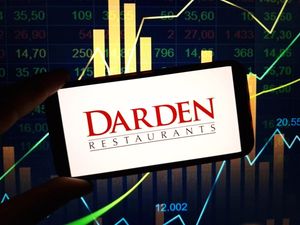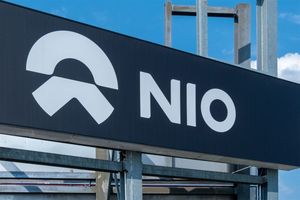
Costco Wholesale Corporation (NASDAQ: COST) delivered an exceptionally strong performance in the third quarter of fiscal year 2025, significantly outpacing analyst expectations and sending a clear signal of robust consumer demand and effective operational strategies. The warehouse retail giant reported a diluted earnings per share (EPS) of $4.28, comfortably beating consensus estimates, and marginally exceeded revenue projections with total revenue reaching $63.21 billion. This impressive financial showing, highlighted by a healthy 13% year-over-year increase in net income, underscores Costco's enduring appeal in a dynamic retail landscape and offers critical insights into the broader health of the consumer economy.
The stellar results have not only reinforced investor confidence in Costco's business model but also provided a vital barometer for the discount retail sector. As consumers continue to navigate persistent inflationary pressures and economic uncertainties, Costco's ability to drive sales growth and maintain profitability speaks volumes about its value proposition and customer loyalty. This performance sets a high bar for competitors and offers a compelling narrative of resilience that could influence investment strategies across the retail industry.
Costco's Q3 Triumph: Exceeding Expectations in a Shifting Market
Costco's third-quarter fiscal year 2025 earnings report, for the period ending May 11, 2025, revealed a significant victory for the membership-based retailer. The company announced diluted earnings per share of $4.28, which comfortably surpassed analyst estimates that ranged from $4.24 to $4.27. This strong bottom-line performance was complemented by total revenue of $63.21 billion, which also slightly edged out projections of approximately $63.1 billion. The financial health was further underscored by a robust 13% increase in net income, reaching $1.90 billion compared to $1.68 billion in the same quarter last year.
These impressive figures are not isolated. They represent a continuation of Costco's consistent operational excellence. The quarter saw comparable store sales rise by 5.7% globally, and an even more impressive 8.0% when adjusted for gasoline prices and foreign exchange impacts. Crucially, U.S. comparable sales climbed by 6.6%, or 7.9% adjusted, demonstrating strong domestic demand. A notable highlight was the 14.8% surge in e-commerce sales, indicating the company's successful adaptation to evolving digital shopping preferences and its effective integration of online and in-store experiences.
The timeline leading up to this moment has seen Costco consistently invest in its value proposition, supply chain efficiency, and digital infrastructure. Key players in this success include the company's executive leadership, who have steered strategic initiatives, and its extensive network of suppliers who ensure product availability and competitive pricing. The bedrock of Costco's model, its loyal membership base, also played a crucial role, with global renewal rates remaining high at 90.2% and membership fee revenue growing by 10.4% to $1.24 billion. This steady stream of membership fees provides a predictable and significant contribution to the company’s profitability.
Initial market reactions to the May 29, 2025 announcement were overwhelmingly positive. Costco's (NASDAQ: COST) stock saw a gain of 4.08% by the following day, reflecting strong investor confidence. Analysts largely maintained bullish outlooks, with many reaffirming their price targets and highlighting Costco's ability to navigate macroeconomic uncertainties better than most retailers. This positive sentiment underscores the market's appreciation for companies demonstrating both growth and resilience in the current economic climate.
Retail Reshuffle: Who Gains and Who Struggles in Costco's Wake
Costco's robust Q3 2025 performance inevitably triggers a ripple effect across the retail landscape, creating distinct winners and losers. At the forefront of the winners' circle is undoubtedly Costco itself, whose strategic commitment to value, bolstered by a strong membership model and expanding e-commerce presence, continues to resonate with consumers. Shareholders of Costco (NASDAQ: COST) are also clear beneficiaries, with the stock seeing a positive surge following the earnings announcement and analysts maintaining a bullish outlook for future growth. Furthermore, price-conscious consumers, who are increasingly seeking value in an inflationary environment, stand to gain as Costco reaffirms its dedication to competitive pricing.
Conversely, direct competitors and other discount retailers are likely to face heightened pressure. While giants like Walmart (NYSE: WMT) also reported strong Q3 2025 results, Costco reportedly outpaced both Walmart and Target (NYSE: TGT) in key metrics such as same-store sales growth and traffic. Costco's aggressive pricing strategy, particularly its commitment to keeping prices low despite tariff pressures, could force competitors to re-evaluate their own pricing structures, potentially squeezing their margins. Target, in particular, has reportedly seen its shares decline following Costco's positive results, suggesting a direct competitive strain. Smaller discount retailers, lacking Costco's scale and high-margin membership revenue, may find it even more challenging to compete on price, risking market share erosion.
Suppliers also find themselves at a critical juncture. Costco's stated policy of treating price increases as a "last resort" means that suppliers are under constant pressure to maintain cost efficiencies and offer competitive pricing. However, opportunities arise for those who can adapt to Costco's evolving supply chain strategies. With Costco actively mitigating tariff impacts by rerouting goods and increasing local sourcing, suppliers capable of offering flexibility in sourcing, demonstrating cost efficiencies, and adapting to potential shifts in logistics are poised to benefit. Those heavily reliant on specific international sourcing locations now subject to tariffs, and who are unable to adjust, might see reduced business. Therefore, agile and cost-effective suppliers who can align with Costco’s demands are emerging as indirect winners.
In essence, Costco's Q3 success is not just a company triumph; it's a recalibration of the competitive dynamics within the retail sector. It spotlights the critical importance of a resilient business model, a strong value proposition, and an agile supply chain in today's market. Companies that can mirror these strengths or find niche markets that Costco doesn't dominate are better positioned to thrive, while those relying solely on traditional retail models may face increasing headwinds.
A Blueprint for Retail Success: Industry Impact and Broader Implications
Costco's stellar Q3 2025 earnings are more than just a win for the warehouse club; they offer a profound blueprint for success in the evolving retail industry and illuminate several broader economic trends. The company's performance strongly validates the enduring "flight to value" consumer spending trend. Amidst ongoing economic uncertainties and inflationary pressures, consumers are increasingly prioritizing value-driven purchases. This shift has propelled retailers like Costco, known for offering quality products at competitive prices, to outperform the broader market. The significant growth of private label brands, such as Costco’s Kirkland Signature, further cements this trend, as consumers demonstrate a clear preference for affordable, high-quality alternatives to national brands.
The success also reinforces the resilience and competitive advantage of the discount retail model, particularly warehouse clubs. Costco's membership model, providing a stable, high-margin revenue stream, coupled with its immense purchasing power, allows it to absorb cost pressures and maintain aggressive pricing. This distinct advantage sets a high bar for competitors, suggesting that merely offering low prices is no longer sufficient; a comprehensive strategy encompassing strong supply chain management, loyal customer engagement, and efficient operations is paramount. While some traditional discount retailers are struggling, Costco's thriving model demonstrates that the discount segment, when executed strategically, remains a powerful force in retail.
Crucially, Costco's Q3 results highlight the critical role of agile supply chain management as a competitive differentiator. The company has proactively navigated the complexities of tariffs by strategically rerouting goods from high-tariff regions and increasing its reliance on locally produced goods. This localization strategy, which includes shifting production of its Kirkland Signature brand to domestic manufacturers, not only mitigates tariff impacts but also potentially reduces transportation costs and supply chain vulnerabilities. Coupled with leveraging AI for inventory optimization, Costco's sophisticated approach to supply chain logistics allows it to maintain its low-cost model and consistent product availability, setting an industry standard for adaptability in a world of less predictable shipping and trade dynamics.
While the earnings report did not detail new regulatory actions beyond tariffs, Costco's explicit acknowledgment of operating in an an "evolving environment with tariffs" underscores the ongoing influence of trade policies on retail operations. The company's proactive mitigation strategies suggest that retailers must remain vigilant and adaptable to governmental trade decisions. Looking ahead, the broader retail industry in 2025 is also expected to grapple with increasing regulatory burdens, particularly concerning data privacy and consumer control. As Costco continues to leverage AI in its operations, it will need to ensure its technological advancements align with these evolving data protection and ethical usage standards, reflecting a wider industry imperative to balance innovation with compliance.
Navigating Tomorrow's Retail: What Comes Next for Costco and the Industry
Costco's robust Q3 2025 performance paints a clear picture of immediate strength, but also sets the stage for a dynamic future requiring strategic pivots and adaptations within both the company and the broader retail sector. In the short term (next 12-18 months), Costco is poised to capitalize on its core strengths. The company's unique membership model, particularly the high-value Executive membership, will continue to provide a stable, recurring revenue stream, further bolstered by the recently implemented annual membership fee increase (effective September 1, 2024), which is expected to positively impact profitability through fiscal 2026. Aggressive strategic expansion, with plans for 27 new warehouses in fiscal year 2025, signals a clear intent to increase market share in suburban areas and emerging markets, solidifying its physical footprint. Furthermore, continued investment in its e-commerce platform, which saw significant growth in Q3, is crucial for attracting digitally-savvy consumers and enhancing the omnichannel shopping experience.
Looking further ahead, into the long term, Costco's growth trajectory will likely be driven by sustained global expansion, particularly into untapped international markets where its bulk purchasing model can thrive. The continued leveraging of its highly successful Kirkland Signature private label brand, which offers higher margins and strong competitive differentiation, will also be key. Enhanced omnichannel integration, seamless digital and physical experiences, and strategic investments in technology, including AI and machine learning for demand forecasting and inventory accuracy, are vital for maintaining operational efficiency and cost control. The "treasure hunt" experience, a unique aspect of Costco's in-store appeal, remains a powerful draw that can be further leveraged to engage customers.
However, the path forward is not without its challenges and requires careful strategic pivots. Costco must continuously balance its commitment to low prices with the need to maintain healthy margins, especially as merchandise and transportation costs fluctuate. Its e-commerce strategy, while growing, still represents a relatively small portion of overall revenue, indicating a need for accelerated development and a more expansive online presence to compete with digital retail giants. Adapting to evolving consumer preferences, such as the rise of smaller households and a desire for more variety beyond bulk offerings, will also be critical. Furthermore, managing its elevated stock valuation amidst potential macroeconomic headwinds, like persistent inflation or interest rate hikes, demands vigilant financial stewardship.
For the broader retail sector (2025-2026), Costco's success underscores several market opportunities and challenges. The acceleration of digital transformation and omnichannel capabilities remains a top priority, with AI and personalization acting as central drivers for deeper consumer insights and optimized operations. Consumer spending is expected to remain robust, particularly in durable goods, but retailers must navigate increasing consumer expectations for seamless, personalized experiences across all touchpoints. Challenges include managing complex global supply chains, addressing labor shortages and rising costs, complying with stricter data privacy regulations, and adapting to potential geopolitical shifts and trade tensions. Retailers who can effectively integrate technology, prioritize customer experience, and maintain agile operations will be best positioned to capitalize on these trends and mitigate risks.
Costco's Enduring Strength: A Look Ahead
Costco's Q3 2025 earnings report stands as a testament to the enduring strength and strategic adaptability of its membership-based model in an increasingly competitive and uncertain retail environment. The robust 13% increase in net income, coupled with an EPS of $4.28 that comfortably beat analyst estimates, underscores the company's fundamental ability to generate substantial profits and deliver significant value to its shareholders. While total revenue of $63.21 billion marginally exceeded expectations, the underlying metrics — strong comparable sales growth, surging e-commerce figures, and a healthy 10.4% rise in membership fee income — paint a picture of operational excellence and deep customer loyalty, with worldwide renewal rates holding firm at 90.2%.
Moving forward, the market's assessment of Costco (NASDAQ: COST) largely remains bullish, despite its stock trading at an elevated valuation, reflecting strong investor confidence in its competitive advantages. The company's unique business model, characterized by high-margin membership revenue and a relentless focus on value, provides a substantial buffer against macroeconomic headwinds, including tariffs and potential inflationary pressures. Costco's strategic investments in logistics and its digital marketplace, such as Costco Next, are effectively driving e-commerce growth and enhancing overall member value, ensuring its relevance in an evolving retail landscape. However, potential challenges such as market saturation in mature regions and broader economic shifts could temper consumer spending, requiring continued vigilance.
The lasting significance of Costco's Q3 2025 performance lies in its demonstration of a resilient business model that consistently delivers value to members through competitive pricing and a compelling shopping experience, which in turn fuels consistent profitability. This success provides a powerful case study for the retail industry, highlighting that customer loyalty, operational efficiency, and an agile supply chain are paramount in today’s market. Costco’s continued global expansion and strategic digital investments are clear indicators of a company well-positioned for sustained long-term growth and leadership in the consumer staples sector.
For investors, several key indicators warrant close attention in the coming months. The ongoing impact of new tariffs and Costco's ability to mitigate these costs without compromising its competitive pricing or profit margins will be crucial. Monitoring the growth in membership fee income and any commentary regarding future adjustments to membership fees will offer vital insights into the company's financial health. Furthermore, the continued performance and expansion of its e-commerce platforms and logistics capabilities should be observed as key drivers of future sales growth. Finally, investors should keep a keen eye on broader economic conditions and evolving consumer spending trends, as these will invariably influence comparable sales and the company's sustained profitability in an ever-changing global market.






